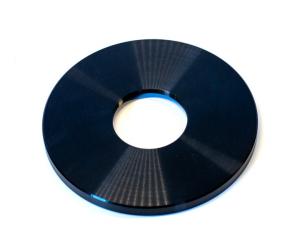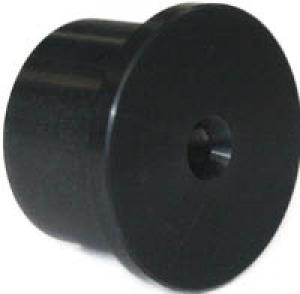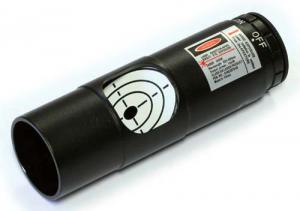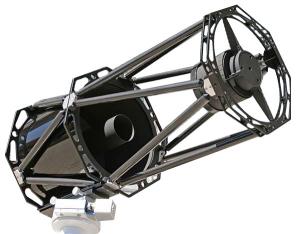- Telescopes
- Overview:
Telescopes - Achromatic Refractor
- Apochromatic Refractor
- Overview:
Apochromatic Refractor - ED Refractor - less color aberration than an achromatic
- SD APO - color free 2-element APO objective
- EDT APO - 3 element ED objective
- High End APO with 3-element APO objective - no color aberation
- Flatfield APO with flat field for Astrophotography
- All Apos and EDs from all manufacturers - large overview
- TS APO and ED from Japan with high quality optics
- Overview:
- Newtonian Telescopes
- Dobsonian Telescopes
- RC Ritchey Chretien Telescopes
- Casssegrain Telescopes
- Reflektor Telescopce with Lens Correcture
- Maksutov Cassegrain Telescopes
- GoTo Telescopes
- Solar Telescopes H-Alpha
- Overview:
- Mounts Tripods Rings Rails Power Supply ...
- Overview:
Mounts Tripods Rings Rails Power Supply ... - Mounts Equatorial with GoTo
- Mounts Equatorial without GoTo
- Mounts Azimutal with GoTo
- Mounts Azimutal without GoTo
- Mounts GoTo - Harmonic Drive
- Travel mounts for astro imaging
- Tripods Piers Polar Wedges
- Mount Control & Electronics
- Dovetail Clamps, Plates and Mount Adapters
- Tube Rings
- Power Supply
- Counterweights Balance Weights
- Mount Accessories - Other
- Overview:
- Telescope Accessories
- Overview:
Telescope Accessories - Eyepieces
- Barlows & Reducer Lenses
- Diagonal Mirrors and Prisms
- Binocular Viewers
- Finder Scopes
- Telescope Collimation and Test
- Cleaning Tools
- Transport and Storage
- Dust protection for Telescopes & Accessories
- Stray Light Protection
- Dewcaps and Heater
- Focusers, Adapters, Motorfocus
- Telescope DIY & Improvement
- Other telescope accessories
- Replacement Parts
- Overview:
- Filters
- Overview:
Filters - Color Filters and Color Filtersets
- Nebular Filters for Visual Observing
- Neutral-Density and Polfilter
- Photo Narrowband Nebular Filters
- Photo Broadband Filters
- Photo Planetary Filters
- Photo R-G-B and IR Cut Filters
- Photo - Filtersets
- Photometric Filters
- Clip Filter for DSLR Cameras
- Filter Wheels and Filterslider
- Solar Filters for white light
- Solarfilter for H-Alpha and Calcium
- Overview:
- Adaptors
- Overview:
Adaptors - Adapter 1,25" and 24,5mm
- Adapter 2"
- Adapter T2 - M42x0.75
- Adapter M48x0,75
- Adapter M54
- Adapter SC
- Adapter M63
- Adapter M68
- Adapter to other Threads
- Adapter Extensions
- Adapter camera bayonet
- Adapter Objective Filterthread
- Adapter Quick Changing , Rotation
- Adapter Eyepiece Projection
- Adapters Tilting
- Overview:
- Astrophotography and Photography
- Overview:
Astrophotography and Photography - Cooled Cameras
- Cameras without Cooling
- Deep-Sky Cameras uncooled
- Set-Offers Camera, Filter, Wheels
- Acessories for Cameras
- Travel mounts for astro imaging
- Imaging Correctors for Telescopes
- Autoguiding Cameras & Sets
- Everything for Guiding
- Focusing aids - Bahtinov mascs
- Flat Field foils and boxes
- Lenses for Cameras
- Piggyback Camera Holder
- Camera Bags, Photocases & more
- Digital Camera and Smartphone Adapter
- Other photo accessories
- Overview:
- Binoculars, Spotting Scopes, Microscopes, Range Finders
- Overview:
Binoculars, Spotting Scopes, Microscopes, Range Finders - Spotting Scopes and Acessories
- Roof Prism Binoculars
- Binoculars with Porro prisms
- Binoculars from 100mm Aperture
- Binoculars with 1,25 inch eyepieces
- TSMX APO Binoculars
- Binoculars for Astronomy
- Binoculars Hiking Bird watching
- Monoculars - Opera Binoculars
- Accessories for Binoculars
- Range Finders
- Microscopy
- Bags for Phototripods & Binoculars
- Overview:
- Phototripods and Binomounts
- Books, Software
- Overview:
Books, Software - Books for Astronomy Beginners
- Star Charts and Planispheres
- Books about our Solar System
- Observing Tips for Amateurs
- Popular Astronomy Literature
- Teaching material
- Astrophotography books
- Telescopes, Observatories, Construction
- Calendars Yearbooks
- Software, Star Charts
- Books for Microscopers
- Books Nature and Animals
- Nature Photography TimeLapse
- Overview:
- Night Vision, Magnifiers, Weather, Domes & more
- Beginner Astronomy and Gift Ideas
- Second Hand & Special Offers
- New products
Manufacturer: -TS Zubehör
Product number: TSRCCELL16ST
EUR2600.00new
EUR 2.600,00
incl. 19 % VAT (DE)
The VAT indicated refers to that applicable in Germany. After logging in, the VAT amount is adjusted to the applicable VAT of the stored delivery country. Therefore, the final price may vary accordingly.
excl. 6.95 € shipping costs (DE)
more details to the shipping costs ...Please log in to calculate shipping costs to your country.
Product expected to be available from 12.12.2025
There are no reviews for this product
- Details..
- Technical data..
- In the box..
- Reviews..
- Manufacturer infos..
- Safety informations..
TS-Optics Carbon primary mirror cell for 406 mm f/8 GSO RC telescopes
The TS RC telescopes are known for their excellent optics. In principle, the mechanical design of the primary mirror cell has its limits if, for example, the telescopes are to be used over a wide temperature range and high adjustment stability is required over a long period of time.The TS carbon primary mirror cell meets these requirements:
The main mirror cell was tested over several months under a wide range of weather and temperature conditions. The entire telescope was also subjected to vibrations that never occur in normal use. Nevertheless, the adjustment was stable.
Optimized baffle tubes included
With older versions of the GSO RC telescopes, there was a design-related problem that unwanted light could fall past the baffle tubes onto the camera sensor. The problem was solved by installing a ring on the baffle tube or an baffle tube extension.
Newer models of the aforementioned telescopes are equipped with a smaller-diameter baffle tube. Both solutions eliminate the problem, but at the same time reduce the 100% illuminated image circle to just a few millimeters in diameter.
With the baffle tubes included in the conversion kit, the protected image circle is so large that a full-frame sensor can be used together with the 0.8x reducer - with significantly less vignetting at the same time. The obstruction is only minimally larger. The insides of the tubes are blackened with TS Black (Musou Black).
Note: The baffle tubes must always be used together in order to achieve the desired effect.
Installing the TS Carbon primary mirror cell
In principle, the conversion can be carried out by an experienced amateur astronomer. However, you should read the conversion instructions first to determine whether you have the necessary experience: Installation instructions
Tools and equipment required
While no special tools are required for the conversion, you will need a high-quality collimation aid for the final adjustment of the telescope. We recommend the TSCOLLIT-G2 collimation telescope. Other devices such as the TSRCKOLLI-G3 are generally suitable, but the larger the telescope, the lower the achievable accuracy.
Because the mirror distance - a critical value for RC telescopes - may have to be adjusted, you should also have a Ronchi eyepiece (TS article number: Ronchi) available.
All devices mentioned and any required adapters are linked in the "Recommended accessories" section.
Compatibility
Older telescopes differ from newer models in various details. We are currently aware of one typical feature that you can use to classify your telescope, namely the mounting of the baffle tube.
To determine the type of connection, please remove the focuser and, if necessary, the focuser flange from the telescope. The aim is to get the best possible view of the baffle tube connection from behind.
On newer models, the baffle tube adapter has an M118 thread and is screwed directly into the cell base plate. On older telescopes, the adapter is designed as a flange that is attached to the base plate with four screws. These four screw holes can be seen from the rear.
If your telescope is constructed in this way, the conversion kit cannot be used directly. However, it is possible to customize it. Please contact us by e-mail for more information.
| Compatibility: | GSO 16" RC telescope with standard mirror |
| Note: | This conversion kit is intended for the telescope with the standard mirror. The variant for the "Lightweight" model has the item number TSRCCELL16LW. |
Message from our customer Gerald H.
Hello everyone,
I just wanted to get in touch after replacing the mirror cell in the RC 14". It was more complicated than I thought, but I took my time. (...)
The mirror cell is nothing like the original; the lateral support is wonderful. Thank you for your efforts and the product!
| Manufacturer / Importeur: | Teleskop-Service Ransburg GmbH |
| Street: | Von-Myra-Str. 8 |
| ZIP / City: | 85599 Parsdorf |
| Country: | Germany |
| Telefon number: | +49 89 99228750 |
| Email: | info@teleskop-service.de |
| Website: | www.teleskop-express.de |
Safety informations: PDF Download
Recommended accessories
Adaptors
Cleaning & Collimating
TS-Optics LA1 1.25" Laser Collimator for exact Newtonian collimation
EUR 46,90RRP EUR 59,00you save 20.5% (EUR 12,10)
Similar Products
TS-Optics GSO 16 inch f/8 RC telescope Gen 2 with carbon truss tube and improved focuser
EUR 7.373,00RRP EUR 8.990,00you save 18% (EUR 1.617,00)
Reviews






















